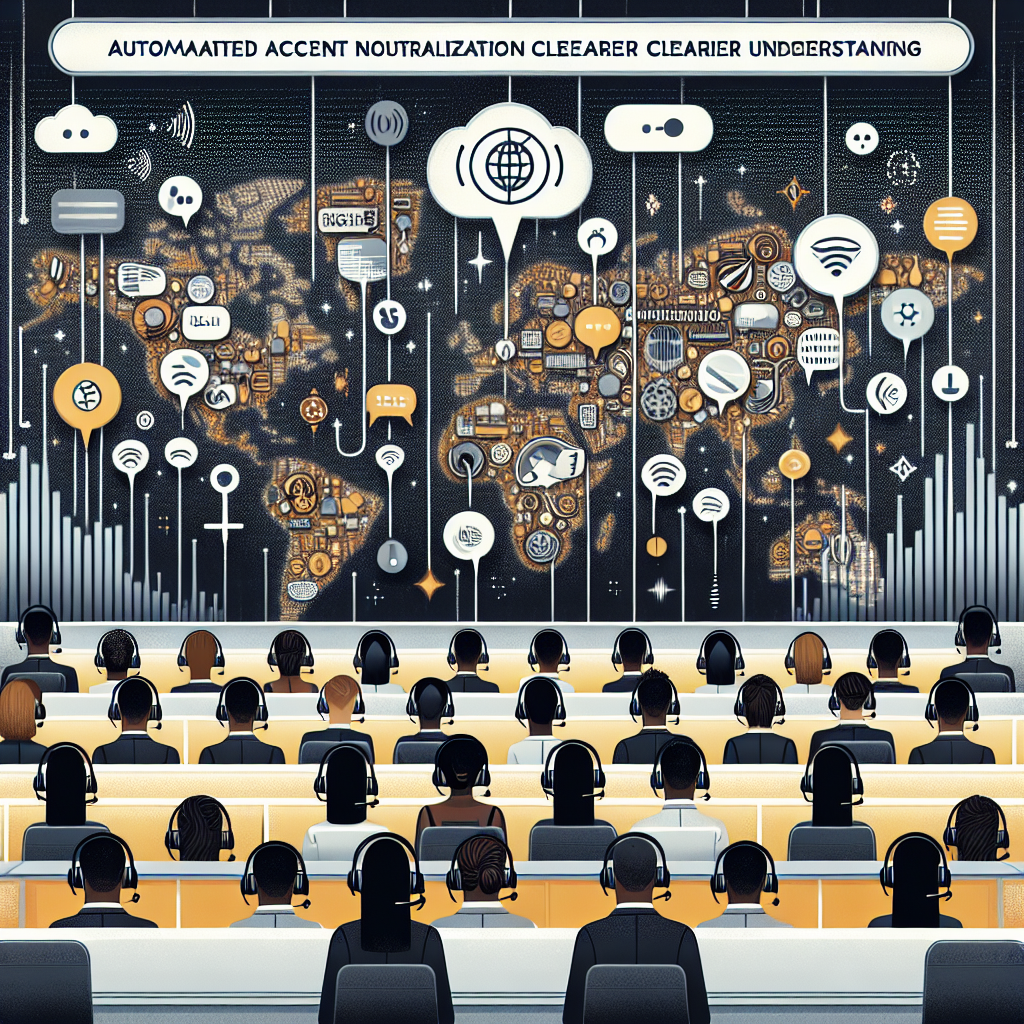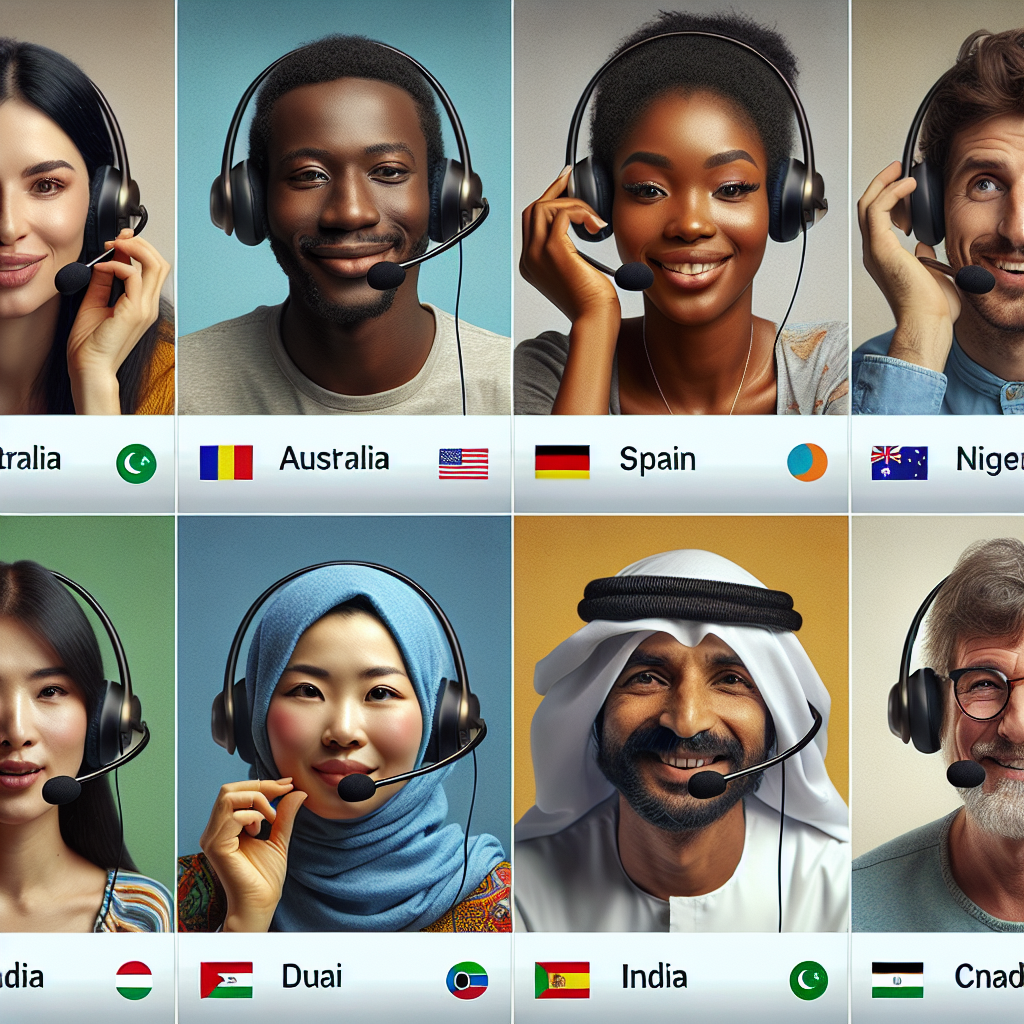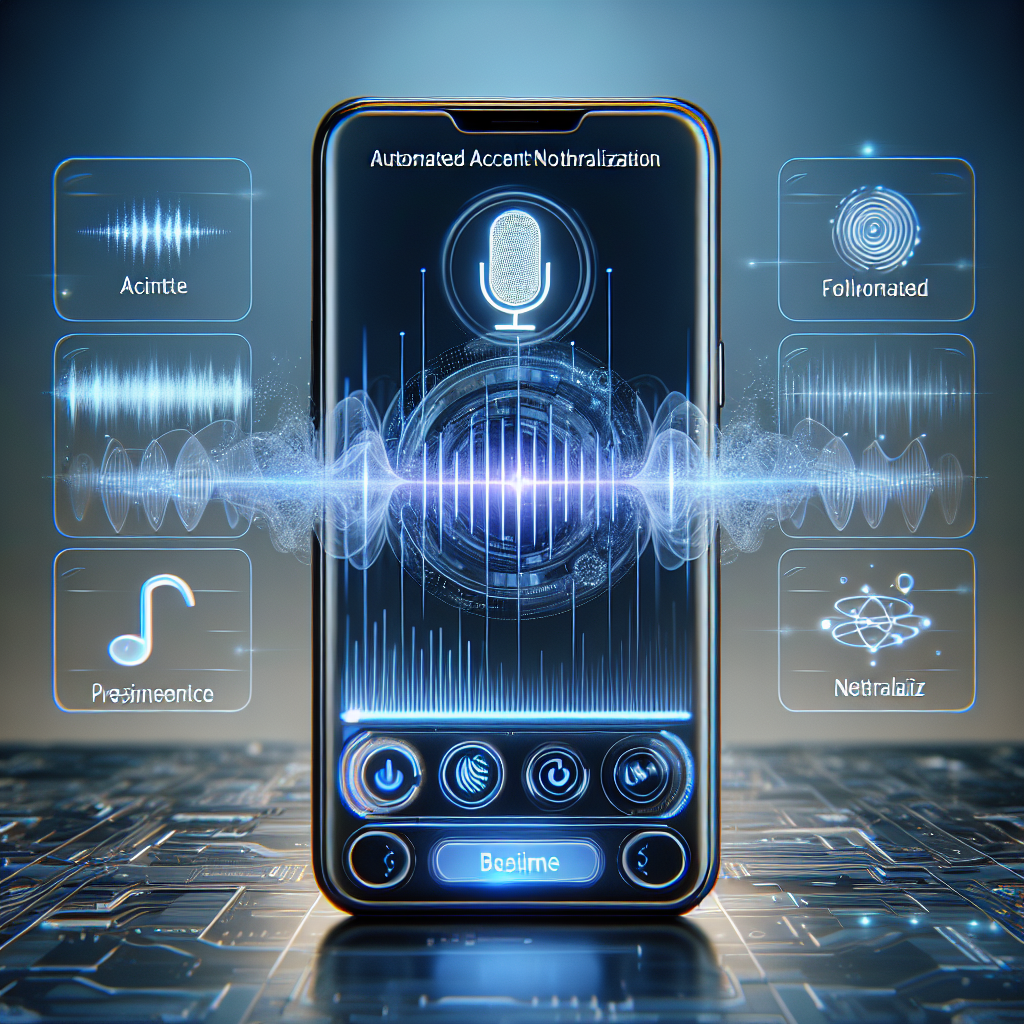
In the diverse and ever-evolving landscape of international business, accent neutralization has emerged as a key factor driving successful communication. Aided by technological advancements, specifically automated accent neutralization, businesses can now overcome the accent barrier, paving the way for clearer and more fluid conversations.

The underlying goal of accent neutralization is neither to eliminate nor undermine a speaker's native accent, but rather to ensure that speech remains comprehensible to a wide audience. Misunderstandings caused by accent differences can culminate in loss of valuable information, hampering business operations. Accent neutralization, thus becomes crucial to precluding such breaches in communication.
The breakthrough of automated accent neutralization software augments this endeavor. These AI-powered tools are designed, not just to comprehend, but to emulate a plethora of accents, in real-time, making seamless cross-border communication a tangible reality. Specifically useful for international call centers and multinational corporations, automated accent neutralization can dramatically enhance call clarity and understanding.
As global businesses increasingly transcend geographical and linguistic barriers, the importance of cultivating a neutral accent cannot be overstated. With features such as real-time feedback and personalized training sessions, automated accent neutralization elevates the quality of business communication, making it more inclusive and accessible.
To summarize, the advent of automated accent neutralization represents a paradigm shift in business communication. Integrating it into business operations is no longer an option but a necessity in today's globally interconnected commerce.
Automated accent neutralization employs a variety of advanced technologies to enhance call clarity and optimize understanding across diverse accents. One of the fundamental technologies leveraging this solution is speech recognition.
Essentially, Speech recognition technology is designed to convert spoken language into written text. It aids in recognizing and understanding different accents by breaking down speech into individual sound bites, deciphering those components irrespective of accent. Once the speech is transcribed, it translates it into a more neutral accent or language to promote mutual comprehension.
Complementing speech recognition is the remarkable Machine Learning (ML). Machine Learning algorithms are trained using vast datasets to help them distinguish various accents. By identifying patterns and features unique to specific accents, these algorithms can adjust the pronunciation of certain words to approximate a neutral tone.
Machine Learning models get better over time. As they are exposed to more accents and voices - the accuracy of accent neutralization improves. This allows the system to account for a broad spectrum of accents and variations in speech.
Furthermore, another crucial technology behind automated accent neutralization is Natural Language Processing (NLP). Natural Language Processing functions by understanding the context and semantic meaning of spoken words, which is integral in successfully neutralizing accents. The combination of these technologies - Speech Recognition, Machine Learning, and NLP, fortifies Automated Accent Neutralization's ability to enhance call clarity and understanding.
With the advent of Artificial Intelligence (AI) in telecommunication, a seismic shift has occurred in the way our conversations are conducted over phone systems. A key evolution is the automated accent neutralization technology that is designed to enhance call clarity and foster understanding. At its core, this technology aims to minimize communication gaps caused by diverse accents, redefining the traditional call system into an efficient and inclusive communication framework.

By integrating accent neutralization with AI-powered phone systems, the communication capacities of businesses increase exponentially. Calls are decoded and neutralized, irrespective of ethnolinguistic variations, facilitating smooth communication by eliminating misunderstandings that could occur due to unfamiliar accents. The practical aspects of implementation, notwithstanding the complexity, provide results that make the operation seem effortless.
Traditionally, communication with a heavy accent might require an interpreter or extensive cross-verification for clarity. With AI and machine learning's inclusion, these translations are more accurate, and the understanding of accented speech has become uncomplicated and bias-free. The AI systems are powered by advanced algorithms that can adapt and learn from multiple accents and languages, becoming more proficient with use.
The communication framework’s integration involves initial implementation stages and continual learning processes. Accent neutralization software is incorporated into the existing AI systems. This software then proceeds to learn from multiple data inputs and continuously evolves to understand and neutralize diverse accents better. Thus, the automated accent neutralization AI-based phone systems are beneficial, scalable, and these are set to revolutionize the telecom sector.
Phone call clarity is no longer a hitch, thanks to the proficient integration of accent neutralization and AI technology. Automated systems are the future, and those who embrace these advancements will undoubtedly reap significant benefits in various sectors from telecommunications to customer relations. By pushing the boundaries of AI and speech recognition, we can bring down linguistic barriers and unlock untold possibilities in global communication.
In the rapid-paced, interconnected business environment of today, clear and effective communication is a necessity. One tool used to enhance this essential business component is automated accent neutralization, a cutting-edge technological solution that significantly improves call clarity and understanding.
The purpose of accent neutralization is simple: to reduce or eliminate barriers in communication that may arise from our accents. Whether it's a sales call, customer support, or team coordination, the effectiveness of verbal communication can hinge on the listener's ability to comprehend the speaker's accent. And here is where automated accent neutralization steps in to change the game.
Accent neutralization technology enables a more homogeneous and clear speech output, regardless of the speaker's native dialect or language. This increased clarity promotes better understanding, leading to a smoother and more productive communication process. Moreover, it onboards a more diverse range of service providers without compromising on communication effectiveness.
The advantages of accent neutralization aren't merely theoretical. Real world case studies bear witness to its utility. For instance, an analysis of the call center industry indicated a dramatic improvement in customer satisfaction and engagement rates after the implementation of accent neutralization software.
Furthermore, businesses employing remote teams around the globe find that accent neutralization simplifies communication challenges, fostering better cooperation between team members. The result is a significantly increased productivity and a more harmonious business environment.
It goes without saying that in a world where communication is key, automated accent neutralization has emerged as an important player. By enhancing call clarity and understanding, it bridges the gap between accents and lays down a path for seamless conversation.
In this digital age where businesses are continually expanding overseas, multilingual call centers have become prominent. One real-world application of automated accent neutralization is seen in call centers, where agents need to sound as professional as possible, irrespective of where they're based.

Accent neutralization tools help non-native English speakers to improve their diction, rhythm, and intonation of English. An Accent neutralization software like Inogolo can be utilized by call center agents. It accent neutralization tool is designed not only to improve clarity of speech but also enhance the caller's understanding. As a result, businesses have reported improved customer satisfaction rates, largely down to customers feeling more understood and valued.
Another significant application was observed in the aviation industry. English, being the universal language of aviation, is often spoken with various accents - leading to frequent misunderstandings and, occasionally, accidents. The implementation of automated accent neutralization can significantly enhance pilot-controller communication. A system like Rosetta Stone’s speech technology can help mitigating the risk of miscommunication due to heavy accents, hence improving flight safety.
Automated Accent Neutralization tools have also been deployed within educational organizations, helping students and teachers from different linguistic backgrounds to bridge communication gaps. It has been observed that academic engagement and performance improve significantly when communication barriers are reduced. This is a clear testament to the power of automated accent neutralization.
To sum it up, the integration of automated accent neutralization systems across various industries has proven to be a success. Not only does effective communication culminate in heightened customer satisfaction, but it also results in safer professional environments and improved learning facilities. With continued technological advancements, the importance and utilization of accent neutralization tools will undoubtedly increase in the future.
The global landscape of communication is undergoing significant transformation due to advancements in **automated accent neutralization** technology. These changes portend an exciting future where the problem of accent comprehension in call centers and personal communication could be nearly eradicated.
For instance, the current generation of **speech recognition systems** like Google’s Speech-to-Text and IBM’s Watson Speech to Text are setting the foundation for a future where sophisticated language models and algorithms are capable of understanding and transcribing various accents with impressive accuracy. More significantly, these future versions of automated accent neutralization technology would allow for real-time translations and accent modifications, bridging a key gap in language communication.
On a similar note, **virtual assistants** are expected to leverage these technologies to facilitate more naturalistic conversations. Prevalent virtual assistants like Amazon's Alexa and Google's Assistant are constantly improving their language models to understand users' accents better, thus advancing personalized experiences.
Furthermore, advancements in text-to-speech synthesis may reconfigure the standard of voice applications or assistive devices. As the technology evolves, we could expect automated voices that carry a neutral accent, potentially customizable to the user's preference.
Nevertheless, despite the promising prospects, it remains essential to address ongoing concerns around privacy and algorithmic bias proactively. These challenges can hinder the full realization of the benefits of **automated accent neutralization**.
In conclusion, the upcoming trends in automated accent neutralization signify a future where **voice interfaces** will become more fluid and inclusive, fostering understanding regardless of one's accent. As we continue to innovate, we are moving one step closer to the realization of a global community where everyone is heard, understood, and respected for their unique linguistic style.
Start your free trial for My AI Front Desk today, it takes minutes to setup!








